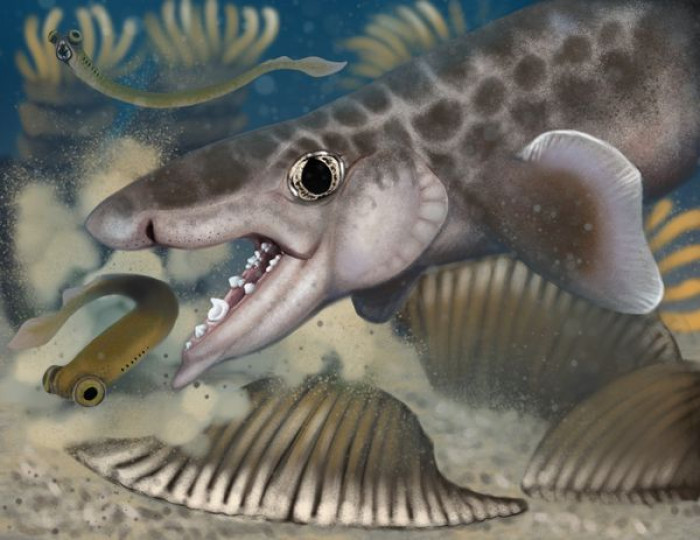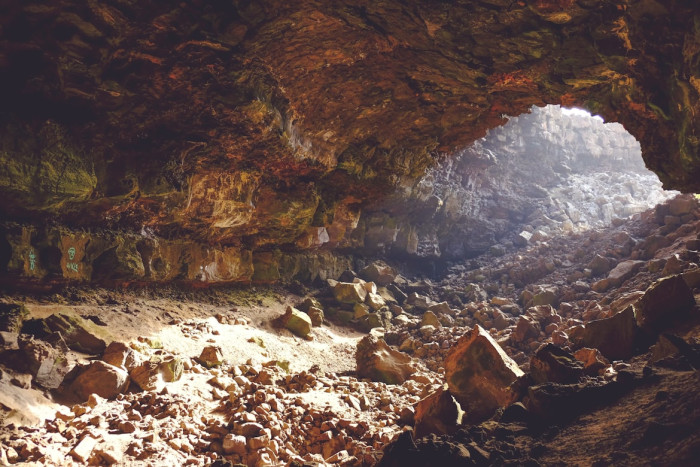Scientists Discover Ancient Shark Hidden Beneath Kentucky
Scientists keep surprising us with what they uncover about life on Earth long before humans ever appeared. Even places we think we already know well can still hold secrets, especially sites shaped over millions of years.
One of those places is Mammoth Cave in Kentucky, famous as the longest known cave on the planet. Beneath its miles of winding tunnels and silent chambers, researchers have just found a tiny but remarkable piece of prehistoric history.
A team of paleontologists has identified a brand-new extinct shark species hidden in the depths of the cave system. It has been officially named Macadens olsoni, and while most people hear “shark” and picture something huge and terrifying, this one was the opposite. It was less than a foot long, small enough to fit in your hands, but its size isn’t what makes it special. It’s the teeth.
This ancient shark had a jaw structure unlike that of any other shark species. Instead of multiple rows of teeth like modern sharks, it only had one row on each side of the jaw, and right at the front, three standout teeth that looked completely different from the rest.
That unusual setup suggests it had a specific diet, likely snacking on seafloor mollusks and worms rather than chasing big prey.
Tiny shark fossil from Mammoth Cave shows Kentucky was once a shallow tropical sea.
Its fossil was found in the Ste. Genevieve Formation, a rock layer dating back roughly 335 to 340 million years. That puts this tiny hunter in the Mississippian period, long before dinosaurs existed.
Back then, the area that is now Kentucky was covered by shallow tropical seas, a very different world from today’s forests and farmland above Mammoth Cave. This discovery didn’t happen by chance. It came from a joint effort involving experts from the National Park Service’s Paleontology Program, scientists at Mammoth Cave National Park, and researchers from the Smithsonian’s Paleobiology Department.
These groups have been working together to study and document fossils throughout the cave system, and their collaboration led to this breakthrough.

The new species name reflects both the cave where it was found and the work of Rickard Olson, a retired park scientist who played a key role in recording shark fossils during a recent paleontological survey. Naming the species after him recognizes his contributions to understanding the ancient secrets of Mammoth Cave.
Superintendent Barclay Trimble spoke about the significance of the find, saying,
"This discovery is a remarkable addition to our understanding of ancient marine life and underscores the importance of preserving and studying our natural history."
He added that the research benefits far more than just scientists:
"This finding not only enhances our knowledge of ancient marine ecosystems but also emphasises the critical role of paleontological research in our national parks. Every discovery connects the past with the present and offers invaluable educational opportunities for students and the public."
Rotuladens, a reclassified ancient shark, sheds new light on Kentucky’s prehistoric seas.
Macaden's Olsoni wasn’t the only shark in the spotlight. While examining fossils from the cave system, researchers also took a fresh look at another ancient species originally identified as Helodus coxanus. After reviewing its features again, they determined it deserved a new name and classification.
It is now called Rotuladens, meaning “wheel tooth” in Latin, a reference to the circular shape of its teeth. The two species share some traits, adding more detail to the picture of the prehistoric marine environment that once existed in the area where Kentucky stands today.

This discovery shows that even in places we believe are well-studied, there is always more to learn.
Mammoth Cave is known for its size and geological beauty, but beneath the stalactites and stone walls are traces of a world from hundreds of millions of years ago, still waiting to be uncovered, one fossil at a time.



